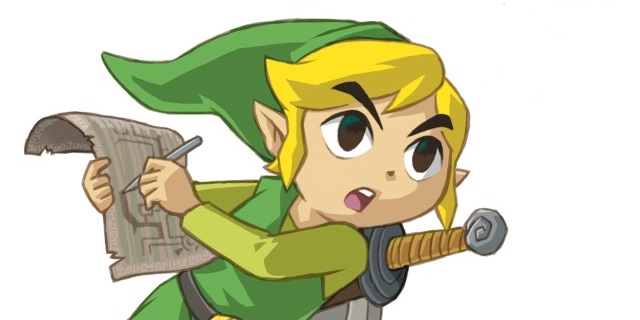
I have a real problem with not finishing things. I’ll read a book cover to cover almost every time, even if I hate it. I’ll never walk out of a movie. If I start watching a TV show, it’s likely that I’ll keep watching despite my level of interest. Games? I have a masochistic attitude. I force myself through to the end of nearly every one I start. Why? Do I see it as a challenge to persevere? Is it a way of suppressing emotions like boredom and continue the goal of completing the game? Does it build discipline?
It’s a strange habit to force myself to complete a game when enjoyment isn’t present. Did I think it would fulfill my life knowing that I pushed through Suikoden IV? Did I actually learn anything by finishing Quest 64? When I make the decision to start a game, I’m making the decision to complete it. I’ll do whatever it takes; lower the difficulty setting if it’s too hard, use guides or walkthroughs if I get stuck or grind for hours if it increase my odds of beating the end boss. My obsession with finishing often gets in the way of having fun.
It doesn’t always go according to plan. Some games take a long time to finish. Some games I have to start two, three or even four times before I stick to it and make it the whole way through. There are some games that I have played that I… well, didn’t finish. They lay in a metaphorical bin, reaching out to me and shouting their lamentations. I’m good! I’m way better than some of the other piles of crap you’ve beat! I’m worth it!
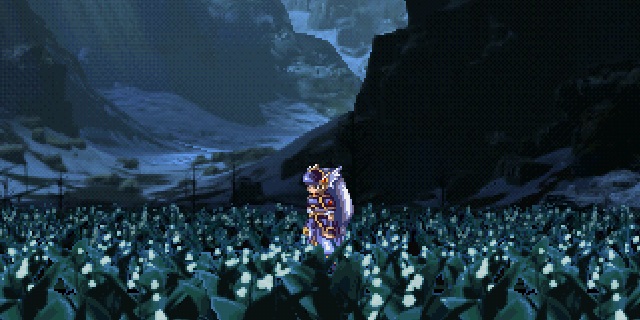
The odd thing about the games I never finished is that they weren’t bad games. So why did I walk away? Was there a part that was too difficult to get through? External factors too much to overcome? Did I get bored? Was I too busy with school, or work? The only way to fully investigate this is to look at a few specific examples.
Developed by tri-Ace, a company that warrants its own Serotonin, Valkyrie Profile had a great premise. You played as Lenneth Valkyrie, a Norse warrior god who recruits and trains the souls of fallen warriors in order to prepare them for a final battle in Valhalla. Norse mythology has long been a source for all some enormously successful entertainment. The game has a great art style, mixing 3D effects with 2D sprites. Flying around the world as Lenneth reminded me of flying an airship in Mode-7 glory from Final Fantasy VI.
By far, the coolest parts of the game are the cutscenes introducing your various potential trainees. Each one has their own tragic backstory, ending with their death. Shortly after they die, they join your party. Lenneth’s job is to recruit einherjar, the souls of deceased warriors, to fight in the war against the Vanir and protect Asgard in Ragnarok. Don’t ask me what all that means, but the concept of a warrior-maiden searching the world for dead people who have the mettle to fight in heaven after coming to terms with their own mortality and exploring monster-infested dungeons is too cool for words.
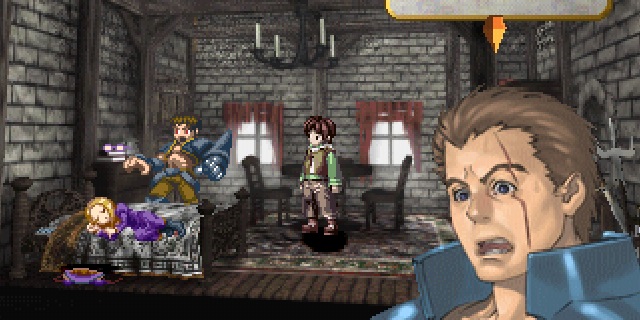
There’s so much to play with here. What is the recently-deceased person thinking? How do they feel, if they feel at all? What is Lenneth’s role in this? Does she console them? Does she order them around? Cutscenes are filled with inner monologues of the fallen, and I found these to be intriguing on the level of the short stories from Lost Odyssey. So why didn’t I finish this game?
I can usually remember the exact circumstances in which I played a game, but for this one, I’m drawing a blank. I do remember that I was slightly annoyed that when a chapter ended, one of your party members would get sent up to Valhalla. I don’t remember there being a cutscene to show them leaving; it just tells you they’ve left. That bugged me.
I grew attached to the characters, and it was very jarring to see them out of my party with little warning. I know the point of the game is to recruit people, train them and send them up, but I’m not sure tri-Ace made the right choice in design here. Like Chrono Cross, I imagine it would be a better game if it trimmed its cast down from 24 to something more reasonable. The game is also punishingly linear. I don’t feel linear is a dirty word, but when developers create a world as fascinating as in Valkyrie Profile, I want to explore it.
Was the grand scale of the story too much for me to handle? Was the nontraditional battle system too complicated to overcome? I’m still not sure. This might be one I go back to, but it’s been 13 years since I’ve played it. Don’t hold your breath.
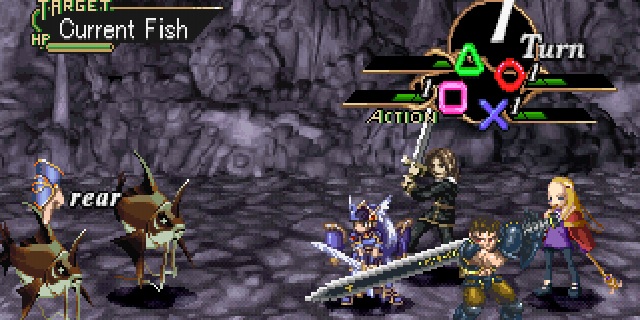
I may be uncertain why I didn’t beat Valkyrie Profile, but I definitely know why I got tired of The Legend of Zelda: Phantom Hourglass.
Each Zelda game is filled with memorable dungeons, boss fights, items and puzzles. Ocarina of Time is considered one of the greatest games of all time. The original is often cited as inspiriation for thousands of game creators. Link to the Past was credited for creating the established Zelda formula. Majora’s Mask broke all sorts of Zelda rules by putting players in a much darker world with a greater emphasis on multiple, smaller stories.
I’m not a fan of Phantom Hourglass‘ visual style. It’s a rough transition from 2D to 3D, and doesn’t age well at all. It’s an isometric view, which I’m normally a fan of, but it’s going for the Wind Waker look without really having the Wind Waker look.
You’ve got to give Nintendo credit for trying something new. Since this is the first Zelda game on the Nintendo DS, it implemented features using the touch screen that I really liked. You could write notes to yourself on the map. Or place reminders to yourself that there’s an inaccessible treasure over there. Or draw lines to remind you of the most efficient route. Or write expletives describing how you feel about a certain area.
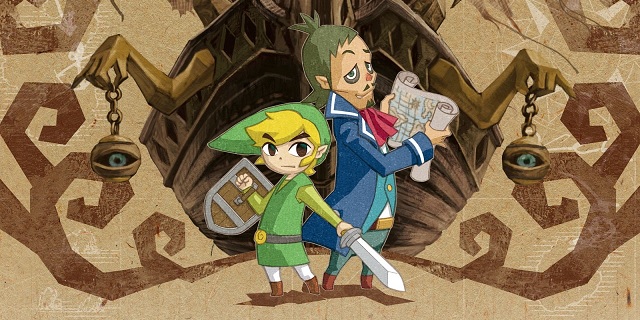
Google maps in a Zelda game? Sure, I’ll try that. You could use the touch screen for battle as well, like using the pen to draw an arc for your boomerang to follow. Very nice.
So what went wrong?
The Temple of the Ocean King. I’d rather sit and stare at a wall.
Throughout the game, you have to revisit this dungeon at least five times. It’s the first dungeon of the game, so it’s not like you’re not familiar with it. Each time you revisit it, you have new abilities and items, so you can progress further each time. It’s not a bad concept; the Metroid series is built on backtracking, and Zelda has always been about using your newly-acquired items to visit previously blocked areas.
The problem is that there’s a timer. The problem is that there’s a stealth mechanic. The problem is that I found this area to be incredibly monotonous and boring. It crippled my interest in the game, and I put it away forever.
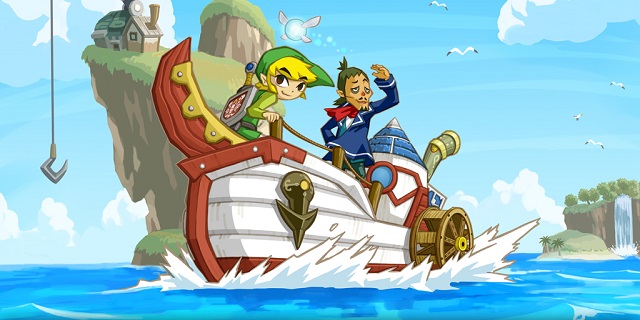
Nothing about it was interesting. It was so different from the rest of Phantom Hourglass, which was colorful and creative. The Temple of the Ocean King was drab. I probably wouldn’t have minded so much, but it forces you to go through the thing four more times! Talk about a momentum killer.
I’m sure many enjoyed Phantom Hourglass, just as I’m sure many enjoyed Valkyrie Profile. Neither are bad games. But certain circumstances can get in our way, as players, that we will never overcome. I’m sure developers hate the idea of people not finishing their game, and are mindful of roadblocks. Few are as stubborn as me; if they’re not liking what they’re playing, they’ll pick up something else.
Thankfully, I have no problems finishing my Serotonin articles. Otherwise, Graham mi
(Editor’s note: Hmph.)



















